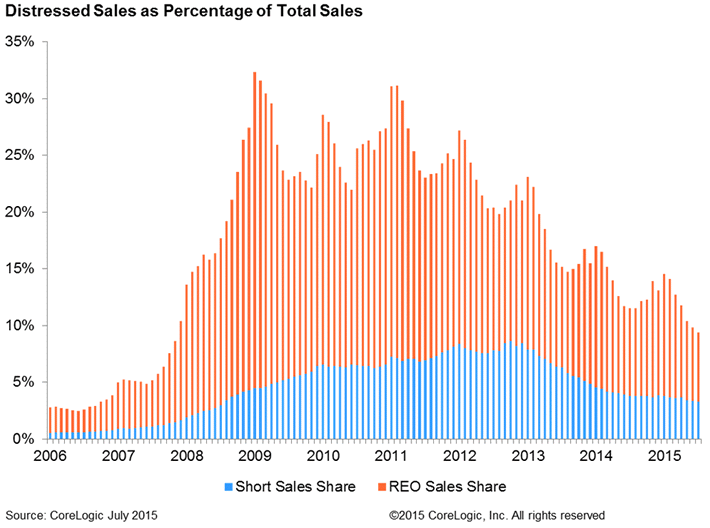Distressed property sales continue to shrink as a percentage of all sales, but CoreLogic says it may be another four years before those shares reach what it considers a normal level. Sales of real estate-owned properties (REOs) and short sales accounted for 9.4 percent of homes sold in July, the company said. This was 2.1 percentage points less than the share in July 2015 and down 0.4 percent month-over month.

Short sales, where lenders agree to take less than the outstanding balance of the mortgages to release the lien had a 3.3 percent share of July sales. The REO share in July, 6.1 percent, was the lowest since September 2007 when it was 5.2 percent. At the peak of housing distress in January 2009 distressed sales in the aggregate accounted for 32.4 percent of housing sales with REO sales having a 27.9 percent share. CoreLogic notes that in "normal" times distressed sales generally have a 2 percent market share. At the current rate of improvement the company calculates that the nation should reach that percentage by mid-2019. At present only North Dakota and the District of Columbia are close to their pre-crisis numbers (within one percentage point).
Florida, at 20.7 percent, had the largest share of distressed sales of any state in July followed by Maryland (20.6 percent), Michigan (20.2 percent), Connecticut (19.1 percent) and Illinois (18.9 percent). Nevada had the largest year-over-year decline, 6.4 percentage points. California had a distressed sales share of 67.4 percent at the peak in January 2009; that has now fallen by 58.6 points, the largest decline in the nation.
Three Florida cities top the list of large metro areas in distressed sales share, Orlando, Miami, and Tampa, all in the 22-24 percent range. They are followed by Chicago and Baltimore, both with shares of just over 20 percent.







